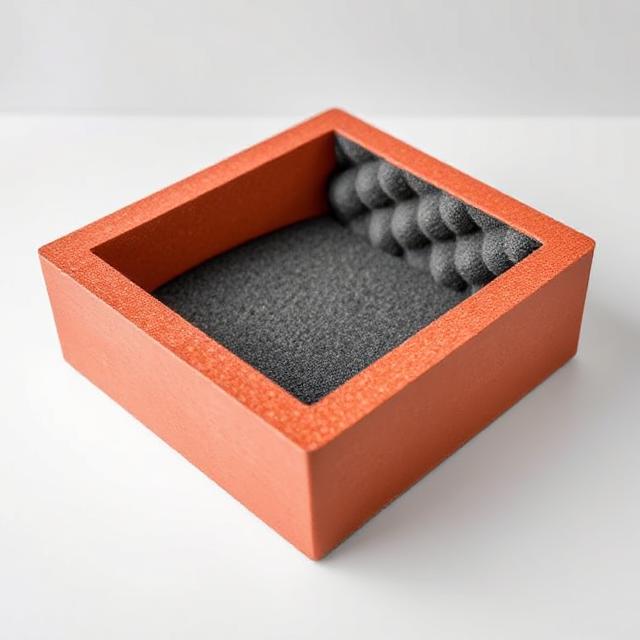What Are Foam Inserts?
Foam inserts are specially cut or molded pieces of foam designed to cushion, protect, and secure products inside packaging. These inserts prevent damage during transit, reduce movement, and can be tailored to perfectly fit the product’s shape.
From luxury watches to sensitive electronics, custom foam inserts are the go-to choice for brands seeking both protection and presentation.
Why custom foam inserts Matter: Benefits for Your Product
Foam inserts offer far more than just physical protection. They contribute to brand perception, shipping efficiency, and customer satisfaction. Here’s how:
1. Shock Absorption & Protection
Foam inserts absorb impacts, vibrations, and shocks during shipping. For delicate items like electronics or glassware, this feature is essential.
2. Enhanced Product Presentation
Custom foam inserts elevate your product’s unboxing experience. A snug, sleek fit shows customers you value quality.
3. Cost-Efficiency in Packaging
Reducing product returns from damage saves money. Foam inserts also optimize package size, potentially lowering shipping costs.
Common Types of Foam Used in Inserts
Each foam type has unique properties. Here’s a look at the most commonly used foams in packaging:
Polyethylene (PE) Foam
- Durable, rigid, and closed-cell
- Ideal for heavier products needing structure
Polyurethane (PU) Foam
- Flexible and open-cell
- Great for lighter products or padding internal components
Ethylene Vinyl Acetate (EVA) Foam
- Shock-absorbent, dense, and versatile
- Popular in electronics, sports equipment, and retail packaging
Cross-Linked Polyethylene Foam
- Combines rigidity with smooth finish
- Frequently used in luxury and presentation-focused packaging
Factors to Consider When Choosing a Foam Insert
There’s no one-size-fits-all solution. Keep the following in mind:
Product Weight and Fragility
Heavier items may require denser foams like PE, while lighter, fragile items benefit from PU foam.
Insert Design and Customization Needs
Will the foam need cutouts, compartments, or multi-product fits? These design factors influence material choice.
Environmental Conditions
If your products face extreme temperatures or moisture, choose foams resistant to such elements.
Branding & Aesthetics
Choose foam color, texture, and finishing that align with your brand’s visual identity.
How to Customize Your Foam Insert for a Perfect Fit
Customization enhances both functionality and aesthetics. Here’s how:
Die-Cutting vs. Waterjet Cutting
- Die-Cutting: Ideal for large runs; economical but less flexible for complex shapes
- Waterjet: Precise and clean; perfect for detailed, low-volume inserts
Color and Texture Options
Foam inserts now come in a variety of colors and textures, allowing for branded unboxing experiences and premium appeal.
Industry Applications for Foam Inserts
Foam inserts are used across industries due to their protective and versatile nature:
Electronics
Prevents static buildup and protects fragile components.
Tools & Hardware
Organized toolkits and protection for sharp or heavy items.
Medical Equipment
Custom foam ensures sterile and precise organization.
Luxury Goods
From perfumes to watches, foam adds elegance and security.
Eco-Friendly Foam Inserts: Are They Worth It?
Yes—sustainable foam alternatives are on the rise. These biodegradable or recycled foams reduce environmental impact and appeal to eco-conscious consumers.
Look for options like:
- Bio-based PU foams
- Recyclable PE foams
- Compostable cellulose-based inserts
10 Smart Strategies to Choose the Right Foam Insert
- Evaluate product dimensions and weight
- Identify shock and vibration risks
- Choose foam density accordingly
- Consider temperature and humidity factors
- Match color/finish with branding
- Use prototyping before bulk ordering
- Factor in shipping and storage conditions
- Select cutting method based on design
- Check for regulatory compliance
- Consult with packaging experts
Common Mistakes to Avoid
- Choosing the wrong foam density
- Ignoring custom fit options
- Neglecting aesthetics in favor of cost
- Not testing foam under real-world conditions
- Skipping professional advice
Real-World Examples: Case Studies on Foam Insert Success
Example 1: Tech Startup Saves $50K in Damages
A startup shipping delicate medical sensors reduced breakage rates by 98% after switching to custom EVA foam inserts.
Example 2: Jewelry Brand Improves Customer Retention
A luxury jewelry brand enhanced unboxing with velvet-textured foam, leading to a 25% increase in social media shares and customer loyalty.
FAQs
1. What foam is best for electronics?
EVA or anti-static PE foam are best for electronics due to their shock absorption and static resistance.
2. Can I use foam inserts for temperature-sensitive items?
Yes, but ensure the foam has thermal insulation properties or pair it with temperature control packaging.
3. Are foam inserts recyclable?
Some are, such as PE and PU, depending on local recycling capabilities. Eco-friendly foams offer compostable or biodegradable alternatives.
4. How long do foam inserts last?
With proper use, they can last several years, especially rigid foams like PE or cross-linked foams.
5. Is foam customization expensive?
Initial costs may be higher, but bulk production and reduced damages often offset the investment.
6. Can I reuse foam inserts?
Absolutely—many businesses reuse them for internal transfers, storage, or returns.
Conclusion:
Custom foam inserts are more than just padding—they’re a powerful tool for enhancing product protection, elevating brand experience, and optimizing logistics. By understanding your product’s unique needs and using the smart strategies outlined in this guide, you can confidently select the right foam insert and make a lasting impression.



